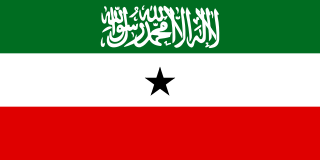
Somaliland, officially the Republic of Somaliland, is an unrecognised country in the Horn of Africa. It is located in the southern coast of the Gulf of Aden and bordered by Djibouti to the northwest, Ethiopia to the south and west, and Somalia to the east. Its claimed territory has an area of 176,120 square kilometres (68,000 sq mi), with approximately 6.2 million people as of 2024. The capital and largest city is Hargeisa.
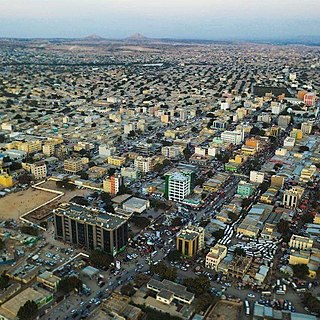
Hargeisa is the capital and largest city of the Republic of Somaliland, a de facto sovereign state in the Horn of Africa, still considered internationally to be part of Somalia. It is also the regional capital of the Maroodi Jeex region of Somaliland.

Burao, also spelt Bur'o or Bur'ao, is the capital of the Togdheer region and the second largest city in Somaliland. Burao was the site of the declaration of an independent Somaliland on 18 May 1991.

The Isaaq is a major Somali clan. It is one of the largest Somali clan families in the Horn of Africa, with a large and densely populated traditional territory.

Ahmed Mohamed Mohamoud "Silanyo" is a Somaliland politician who was President of Somaliland from 2010 to 2017. He is a long-time member of the government, having served as Minister of Commerce of the Somali Republic, and among other Cabinet positions. During the 1980s, he also served as the Chairman of the Somali National Movement.

The history of Somaliland, a country in the eastern Horn of Africa bordered by the Gulf of Aden, and the East African land mass, begins with human habitation tens of thousands of years ago. It includes the civilizations of Punt, the Ottomans, and colonial influences from Europe and the Middle East.

The Somali Civil War is an ongoing civil war that is taking place in Somalia. It grew out of resistance to the military junta which was led by Siad Barre during the 1980s. From 1988 to 1990, the Somali Armed Forces began engaging in combat against various armed rebel groups, including the Somali Salvation Democratic Front in the northeast, the Somali National Movement in the Somaliland War of Independence in the northwest, and the United Somali Congress in the south. The clan-based armed opposition groups overthrew the Barre government in 1991.
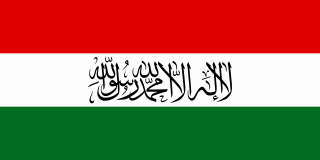
The Somali National Movement was one of the first and most important organized guerilla groups and Mujahideen groups that opposed the Siad Barre regime in the 1980s to the 1990s, as well as being the main anti-government faction during the Somaliland War of Independence. The organisation was founded in London, England, on April 6, 1981 by Hassan Isse Jama, Hassan Adan Wadadid, and Ahmed Mohamed Gulaid and other former Somali diplomats, who stated that initially the group's purpose was to overthrow the Siad Barre regime.
The Somali Rebellion was the start of the Somali Civil War that began in the 1970s and resulted in the collapse of the Somali Democratic Republic in 1991. The rebellion effectively began in 1978 following a failed coup d’état and President Siad Barre began using his special forces, the "Red Berets", to attack clan-based dissident groups opposed to his regime. Backed by Ethiopia, the two earliest rebel factions, the Somali Salvation Democratic Front (SSDF) and the Somali National Movement (SNM) began attacks during the against government forces during the early 1980s.
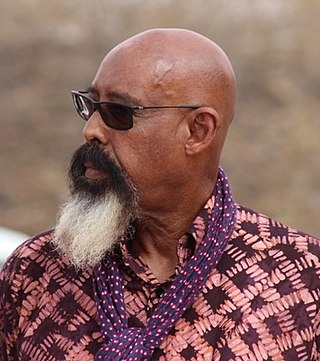
Major General Mohammed Said Hersi Morgan, better known by his nickname General Morgan, is a Somali military officer and former warlord. He was the son-in-law of Siad Barre and the last Minister of Defence of Somalia under Barre's regime. He hails from the Majeerteen Darood clan.
Over the course of the Somali Civil War, there have been many revolutionary movements and militia groups run by competing rebel leaders which have held de facto control over vast areas within Somalia.

The Awal, also contemporarily known as the Habr Awal, Subeer Awal, and alternately known as the Zubeyr Awal is one of the largest subclans of the wider Isaaq clan family, and is further divided into eight sub-clans of whom the two largest and most prominent are the Isamusa and Sa'ad Musa sub-clans. Its members form a part of the Habar Magadle confederation.

The Hargeisa War Memorial is a monument in Hargeisa, the capital of Somaliland. The memorial was set up to commemorate the Somaliland War of Independence, and is a symbol of struggle for the people of Somaliland.

The Isaaq genocide, also known as the Hargeisa Holocaust, was the systematic, state-sponsored genocide of Isaaq civilians between 1987 and 1989 by the Somali Democratic Republic, under the dictatorship of Siad Barre, during the Somaliland War of Independence. The number of civilian deaths in this massacre is estimated to be between 50,000 and 100,000, according to various sources, whilst local reports estimate the total civilian deaths to be upwards of 200,000 Isaaq civilians. The genocide also included the levelling and complete destruction of the second and third largest cities in the Somali Republic, Hargeisa and Burao, respectively, and had caused up to 500,000 Somalis of the region, primarily of the Isaaq clan, to flee their land and cross the border to Hartasheikh in Ethiopia as refugees in what was described as "one of the fastest and largest forced movements of people recorded in Africa", which resulted in the creation of the world's largest refugee camp then (1988), with another 400,000 being displaced. The scale of destruction led to Hargeisa being known as the 'Dresden of Africa'. The killings happened during the Somali Civil War and have been referred to as a "forgotten genocide".

The Somaliland Peace Process refers to the series of grassroot initiatives that brought peace to Somaliland after the collapse of central government of Somalia. In conjunction with the Somali National Movement, communities in Somaliland negotiated a series of truces to end hostilities and address the grievances between the communities who were often on opposing sides to the Barre regime.
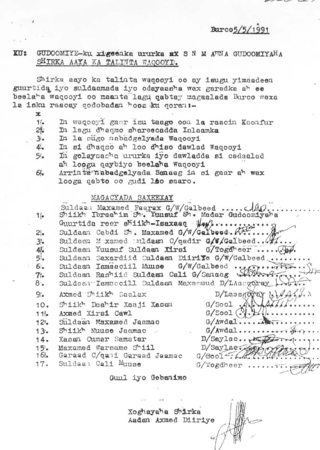
The Somaliland Declaration of Independence was made on 18 May 1991 by Somali sultans from the Isaaq, Dhulbahante, Issa, Gadabursi, Warsangali clans, as well as the Somali National Movement.
Mohamed Hashi Dirie, commonly known as Lihle was a Somali military leader, colonel of the Somali National Army and later the commander of the military wing of the Somali National Movement. He belonged to the Farah Mohamed branch of the Musa Abdallah subclan of the Habr Yunis.

The Somaliland National Army, is the land force and largest branch of the Somaliland Armed Forces is based in the Somaliland capital of Hargeisa. The Somaliland National Army is composed entirely of professionals and volunteers due to the army not being mandatory of conscription. Some Somaliland battalions operate near the Puntland border due to a border dispute.

The Somaliland War of Independence was a rebellion waged by the Somali National Movement (SNM) against the ruling military junta in Somalia led by General Siad Barre lasting from its founding on 6 April 1981 and ended on 18 May 1991 when the SNM declared what was then northern Somalia independent as the Republic of Somaliland. The conflict served as the main theater of the larger Somali Rebellion that started in 1978. The conflict was in response to the harsh policies enacted by the Barre regime against the main clan family in Somaliland, the Isaaq, including a declaration of economic warfare on the clan-family. These harsh policies were put into effect shortly after the conclusion of the disastrous Ogaden War in 1978.
Mandera Prison, also sometimes spelled as Mandhera or Mandheera Prison, is an isolated, high-security central prison located in the town of Mandera in the Maroodi Jeex Region of the self-proclaimed nation of Somaliland, about 95 km (59 mi) northeast of the capital Hargeisa. The prison has been in operation since Somaliland was still a British protectorate, and to this day functions as a major prison within the region.

















